Day 1 La Paz
Day 2 La Paz Leisure day (223 km)
Day 3 La Paz - Uyuni (623 km)
Day 4 Salt Lake - Island of The Fish - San Juan or Chuvica (90 km)
Day 5 San Juan - Red Lagoon (1485 km)
Day 6 Red Lagoon - Green Lagoon - Uyuni - La Paz (2026 km)
Day 7 La Paz - Puno (218 km)
Day 8 Puno - Lake Titicaca - Puno (12942 km)
Day 9 Puno - Ayaviri - Raqchi - Andahuaylillas - Cusco (337 km)
Day 10 Cuzco
Day 11 Cusco - Rainbow Mountain - Cusco
Day 12 Cusco: Sacred Valley of the Incas - Sanctuary of Ccochahuasi - Pisac Market -
Perilnoyoc Waterfall - Hanging Hotel - Ollantaytambo (77 km)
Day 13 Ollantaytambo - Santa Teresa - Santa Maria - Aguas Calientes (129 km)
Day 14 Aguas Calientes - Machu Picchu - Sun Gate - Cuzco (77 km)
Day 15 Lima (582 km)
Day 1:
La Paz
Today guests will gather in La Paz. After pickup from the airport, guests will be transferred to the hotel and enjoy the rest of the day at their own leisure.
Day 2:
La Paz Leisure day (223 km)
Breakfast: Included|Lunch: Excluded|Dinner: Excluded
Visiting The The Square Murillo, Cathedral, Palace of Government, Church of San Francisco, Viewer of Quilli Quilli, Gold Museum, Market of the Witches and the Valley of the Moon. Then we go on through a highway asphalted to Tiwanaku, visit the Archaeological place of Tiawanaku and their main ceremonial centres within 2.5 hours: The Pyramid of Akapana, Semi-underground Temple, Temple of Kalasasaya, The Door of the Sun, etc.
-
La Paz, BOLIVIA
Set against a striking backdrop of snow-capped mountains, it is Bolivia’s third most populous city and the world’s highest seat of government. La Paz is best explored at a slow pace, taking the time to soak up Bolivia’s rich culture and incredibly fascinating history.
Moon Valley
Away from the tumults of La Paz's urban life, the valley of the moon is not a real valley, but a whole of strange geological formations, fairies, or snakes, chimneys, leading to special shapes.
Plaza Murillo
La Paz's Plaza Murillo is a pigeon-filled public square steeped in history, conquest, conflict, and tragedy. Surrounded by imposing buildings such as the Presidential Palace, the La Paz Cathedral, and the National Congress of Bolivia.
-
Tiwanaku, BOLIVIA
Tiwanaku is another ancient civilization whose timeline came and went, leaving behind megalithic monuments that go without explanation as to their mathematical design and construction. History buffs will love diving into the myths and mysteries of this lost civilization.
Day 3:
La Paz - Uyuni (623 km)
Breakfast: Included|Lunch: Excluded|Dinner: Excluded
After breakfast,we will transfer to the bus terminal and departure to Oruro. Traveling from La Paz to Uyuni is a 540 km journey that can be as comfortable and scenic as you make it. With limited time in Bolivia, The result was a scenic train ride with locals, watching lagoons filled with flamingos, quinoa fields and llamas running around. This is by far the most scenic route and also one of the few possibilities to travel by train in South America which make it your obvious choice. The train doesn't start directly in La Paz so your journey will be split in 2 parts: Bus from La Paz to Oruro ( 4 hours ) Train from Oruro to Uyuni ( 7 hours ), train only runs between these two towns, upon arrivel transfer to the selected hostal or hotel
-
Uyuni, BOLIVIA
Uyuni is a city in the southwest of Bolivia. It primarily serves as a gateway for tourists visiting the world's largest salt flats - the Salar de Uyuni. he city also acts as a gateway for commerce and traffic crossing into and out of Bolivia from and to Chile.
Day 4:
Salt Lake - Island of The Fish - San Juan or Chuvica (90 km)
Breakfast: Included|Lunch: Included|Dinner: Included
After Breakfast, we will transfer to the office for our departure to the biggest Salt Desert, in mobility ( Land Cruiser - 4x4 ) In the itinerary you visit: " The Island of the Fish " populated by numerous giant cacti with heights superior to the 10 meters, from the summit you can contemplate the wonderful landscape of Salting. After our visit to the island, we will have lunch and in the afternoon we will continue to San Juan's Population where we will spend the night at Family homes. We will also visit the Island Incahuasi ( Island of the Fish ). The residents taught us the drying process, milled and pocketed of the salt, clever for the consumption, after the visit we will continue with the same transport when and to be able to visit Hotel of Salt. In the afternoon we will arrive to San Juan or Chuvica, spend the night and dinner.
-
Uyuni, BOLIVIA
Uyuni is a city in the southwest of Bolivia. It primarily serves as a gateway for tourists visiting the world's largest salt flats - the Salar de Uyuni. he city also acts as a gateway for commerce and traffic crossing into and out of Bolivia from and to Chile.
Uyuni Salt Flat
It is the world's largest salt flat, stretching over 10,000 square kilometers, resembling a stunning white ocean.
Incahuasi Island
Isla Incahuasi is a hilly and rocky outcrop of land and former island in Bolivia situated in the middle of Salar de Uyuni, the world's largest salt flat, at an elevation of 3,656 meters.
-
San Juan, BOLIVIA
San Juan is a traditional village on the edge of Bolivia's Uyuni Salt Flat, serving as a key gateway for salt lake tours and known for stargazing and flamingo habitats.
Day 5:
San Juan - Red Lagoon (1485 km)
Breakfast: Included|Lunch: Included|Dinner: Included
Today we will leave for the Green lagoon, which is located to the feet of the volcano Llicancabur. Afterwards we will continue to Polques, where we have lunch, break. Then we continue to the Red Lagoon, visiting the active Volcano Ollague, the lagoons of Canapa, Chiarcota and Sling, lagoons that are populated by flamingos. In the afternoon we will continue our journey passing the desert of Siloli where we will observe an interesting rocky formation well known as the Tree of Stone. Then we will spend the night and dinner here.
-
Polques, BOLIVIA
Polques is a geothermal area in Bolivia's Eduardo Avaroa Reserve, famous for its soothing hot springs that offer a perfect relaxation spot for altiplano travelers.
-
Eduardo Avaroa Andean Fauna National Reserve, BOLIVIA
Eduardo Avaroa Andean Fauna National Reserve is Bolivia's gem, featuring Red Lagoon, Green Lagoon, geysers and flamingo flocks, showcasing the altiplano's stunning landscapes.
Green Lagoon
The Green Lagoon in Bolivia's altiplano astonishes with its emerald-green color, caused by arsenic and mineral deposits, creating a stunning contrast with the desert landscape.
Red Lagoon
The Red Lagoon in Bolivia's altiplano dazzles with its brick-red waters colored by algae and sediments, where flocks of James's flamingos create a breathtaking scene.
Siloli Desert
Siloli Desert in Bolivia's altiplano features extraordinary wind-sculpted rock formations, most famously the "Stone Tree," showcasing nature's artistic power.
Day 6:
Red Lagoon - Green Lagoon - Uyuni - La Paz (2026 km)
Breakfast: Included|Lunch: Included|Dinner: Excluded
At around 5:00am we will leave Laguna Colorada early to make it to the first stop,Sol de Manana. Next stop is the Hot springs. From Laguna Challviri hot springs we will drive towards the Laguna Verde passing through the surreal desert of Salvador Dali. Arriving at Laguna Verde before 10:00am, we will be able to see the Volcano Lincacabur guarding the laguna. Afterwards we will come to the border transfer those heading to Chile. Then we head back towards Uyuni. Transfer to Uyuni Airport for your fly to La Paz, arrive transfer to the selected hotel.
Note: Those wishing for a 4 day journey will spend the night in Villa Mar in a rustic lodge and return to Uyuni leisurely on day 4. Those wishing to do it all in 3 days will come back to Uyuni via San Cristobal and arrive approximately at 5:00pm.
-
Eduardo Avaroa Andean Fauna National Reserve, BOLIVIA
Eduardo Avaroa Andean Fauna National Reserve is Bolivia's gem, featuring Red Lagoon, Green Lagoon, geysers and flamingo flocks, showcasing the altiplano's stunning landscapes.
Red Lagoon
The Red Lagoon in Bolivia's altiplano dazzles with its brick-red waters colored by algae and sediments, where flocks of James's flamingos create a breathtaking scene.
Sol de Manana
Sol de Manana is a dramatic Bolivian altiplano geothermal field featuring boiling mud pools, erupting steam vents and intense sulfur fumes, showcasing Earth's raw power.
Laguna Challviri Hot Springs
Laguna Challviri Hot Springs are natural geothermal wonders in Bolivia's altiplano, offering warm mineral-rich waters surrounded by snow-capped mountains for a unique relaxation experience.
Salvador Dali Desert
The Salvador Dali Desert in Bolivia's Eduardo Avaroa Reserve features surreal, barren landscapes and strange rock formations that vividly resemble the painter's dreamlike artworks.
Green Lagoon
The Green Lagoon in Bolivia's altiplano astonishes with its emerald-green color, caused by arsenic and mineral deposits, creating a stunning contrast with the desert landscape.
-
Volcano Lincacabur, BOLIVIA
Licancabur is a perfect conical stratovolcano on the Bolivia-Chile border, overlooking Laguna Verde. Revered by Incas, it contains one of the world's highest lakes at its summit.
Day 7:
La Paz - Puno (218 km)
Breakfast: Included|Lunch: Included|Dinner: Excluded
Early in the morning we will transfer to Copacabana Sanctuary, board the Catamaran Cruise ship, and then have a lunch while sailing to Sun Island. Then we will visit the Inca Garden, steps and fountain then the Inti Wata Cultural Complex including the Ekako Underground Museum, the traditional medicine and the Titikaka Reed Shipbuilders display centers, the Pachamama agricultural Inca terraces, a handicraft center, the Intica lounge and at the Manco Kapac look out. Afterwards we will visit the Inti Wata Complex at Sun Island includes a unique sailing experience aboard a huge Titikaka traditional vessel to enjoy a panoramic view of the Pilkakaina Inca Palace. We will have the opportunity to interact with one of the most unspoiled indigenous Titikaka villages visiting their own museums, houses and sailing in their vessels to an Inca holy temple. Lastly we will arrive in Puno and transfer to the hotel.
-
Lake Titicaca, BOLIVIA
Lake Titicaca is a large, deep lake in the Andes on the border of Bolivia and Peru, often called the "highest navigable lake" in the world. By volume of water and by surface area, it is the largest lake in South America.
Copacabana Sanctuary
The Copacabana Sanctuary is a famous pilgrimage site on Lake Titicaca, renowned for its 16th-century Virgin statue, blending Catholic and indigenous beliefs as one of Bolivia's key religious centers.
Sun Island
Sun Island is a sacred island on Lake Titicaca, renowned as the birthplace of Inca civilization with ancient terraces, Inca ruins, traditional villages and stunning landscapes.
The Inti Wata Cultural Complex
The Inti Wata Cultural Complex in Copacabana showcases Lake Titicaca's ancient civilizations through traditional exhibits, reed boat rides, and folk performances, highlighting Andean culture.
Pilkakaina Inca Palace
Pilkakaina Inca Palace at Sun Island's southern tip is a key Inca Empire site, believed to be a ruler's retreat, renowned for its fine stonework and Lake Titicaca vistas.
-
Puno, PERU
Puno is a city in southeastern Peru, located on the shore of Lake Titicaca. It is the capital city of the Puno Region and the Puno Province. Puno has several churches dating back from the colonial period; they were built to service the Spanish population and evangelize the natives.
Day 8:
Puno - Lake Titicaca - Puno (12942 km)
Breakfast: Included|Lunch: Included|Dinner: Excluded
Early in the morning, we will take a tourist motorboat excursion on the Lake Titicaca to Floating Islands of the Uros. Then we will continue our motorboat trip to Taquile Island and then go up a stairway of more than 567 steps to arrive at the Town of Taquile where we will have a lunch. After that we will walk through the various hills and archaeological sites of the long Island. After lunch in a local Taquile Inn, we have a walk through the various hills
and archaeological sites of this 6 km long Island. In the afternoon, we return back to Puno for overnight in the hotel.
-
Lake Titicaca, PERU
In Andean belief, Titicaca is the birthplace of the sun. Set between Peru and Bolivia, itâs the largest lake in South America and the highest navigable body of water in the world. Bright days contrast with bitterly cold nights. Enthralling, deep-blue Lake Titicaca is the unifying, longtime home of highland cultures steeped in the old ways.
Taquile Island
Taquile is an island on the Peruvian side of Lake Titicaca 45 km offshore from the city of Puno. The highest point of the island is 4,050 metres above sea level and the main village is at 3,950 metres.
Uros Floating Islands
Created by the indigenous Uros people as protection against attacks from the Incas, the Uros Islands are one of the world's most innovative feats of human engineering.
Day 9:
Puno - Ayaviri - Raqchi - Andahuaylillas - Cusco (337 km)
Breakfast: Included|Lunch: Included|Dinner: Excluded
After breakfast we will head to Cuzco. We travel along the High Plateau of Collao, stopping at the Town of Ayaviri to visit the impressive Temple of Kalasaya. On the way we stop in Raqchi, where we can see a spectacular Inca Sanctuary built. Afterwards we pass through the La Raya Ranch where we can see troops of vicunas and llamas. Then we will pass by the lovely Wacarpay Lake offering spectacular views of the mountains.
Then we will continue proceeding to the Town of Andahuaylillas and visit the Church of San Pedro de Andahuaylillas. We will have a buffet lunch in a countryside restaurant. Upon arrival in Cuzco we will transfer to the hotel.
-
Ayaviri, PERU
Ayaviri is a Andean town in Peru's Puno region, situated on the altiplano. Known for its colonial church, traditional livestock farming, and nearby prehistoric sites, it serves as a key regional center.
Temple of Kalasaya
The Temple of Kalasaya in Ayaviri is an ancient stone platform complex in Peru's Puno region, belonging to pre-Incan cultures, showcasing Andean architectural and astronomical wisdom.
-
Raqchi, PERU
An Inca archaeological site in Peru known as the Temple of Wiracocha, one of its constituents.
Temple of Wiracocha
The Temple of Wiracocha is the most famous construction of the archaeological site of Raqchi in Cusco. Its name is related to the god Huiracocha, creator of the world according to many ancient cultures of the coast and mountains of Peru. It is a temple over 14 meters high, the tallest Inca structure discovered to date.
-
Andahuaylillas, PERU
Andahuaylillas, is a small town of mercy mild climate that is surrounded by mountains. Having as one of its main attractions Sistine Church of America.
Sistine Church of America
The San Pedro de Andahuaylillas church is considered the "Sistine Chapel" of America due to the quality of its works of art. Even if its architectural structure is classic of small town churches.
Day 10:
Cuzco
Breakfast: Included|Lunch: Excluded|Dinner: Included (folklore show)
After breakfast we will take a visit by your own to the Street San Blas. Hatunrumivoc is located close to Plaza Nazarenas famous for it's Inca walls. We'll find the 12 Angled Stone about halfway down the street. Then we will enjoy leisure time at the Central Market or Mercado de San Pedro. The San Pedro Market in Cuzco sits about an eight minute walk south from Plaza de Armas. In the afternoon we will have a sightseeing of Cuzco visiting the Main Square, the Cathedral and the Temple of the Sun or Korikancha. Afterwards we'll drive out of the city to visit the Inca sites of Kenko, Tambomachay, Puca Pucara and the impressive Fortress of Sacsayhuaman. At 8:00pm we will enjoy a dinner with a folklore show in a typical restaurant.
-
Cusco, PERU
This city once served as the capital of the Inca Empire. Many of its most popular sights are the ruins of this once-great people, such as the famous "lost city" of Machu Picchu. Cuzo itself also has many sights.
San Blas
This is one of the barrios in the city of Cuzco, famous for its architecture that dates back to the era of Spanish colonialism in Peru and the narrow, cobblestone streets.
San Pedro Market
This large public market in Cuzco is a bustling bazaar where you can find all sorts of handmade crafts and locally grown foods. Wandering amongst the stalls, you will get a firm sense of the local culture.
Twelve Angled Stone
Twelve Angled Stone is about halfway down the street Hatunrumivoc,which is famous for it's Inca walls where huge stones are precisely carved to fit together without mud or concrete.
Puka Pukara
In the ancient Quechan language, the name of this set of ruins near Cuzco mean "the red fortress." It features large, terraced walls that sit on a hill overlooking the surrounding valley.
Sacsayhuaman
Sacsayhuaman is strategically built on a hill overlooking Cuzco and famous for its enormous carved stones, some of them standing over 9m/30ft high and weighing over 350 tons.
Day 11:
Cusco - Rainbow Mountain - Cusco
Breakfast: Included|Lunch: Included|Dinner: Excluded
A fantastic day tour ( with trekking ) to the so - called 7 Color Mountain, leaving from Cusco. Located in southern Peru, in the Cusco region, this route will take you through stunning landscapes with glaciers, snowcapped mountains and crystal clear rivers and lakes. Pass by local villages of Quechua descendants and explore the breathtaking surrounding nature. You will be picked up from your accommodation at around 3.00am and start making your way to Arco ( on the route to Puno ) eventually getting to the Checacupe district ( 2 hour journey ). Then we will continue to Pitumarca and a number of small villages till we reach the Hanchipata - Quesuno community ( another 1.5 hours ). From here we start our hike. The trek lasts for about 3 hours until we get to the stunning landscape of Vinicunca ( Rainbow Mountains ). Here we will have about one hour to relax and take amazing pictures of this natural wonder. We then hike back to the starting point of the trek, and from there return to Cusco ( arriving at approximately 19.00 ).
-
Cusco, PERU
This city once served as the capital of the Inca Empire. Many of its most popular sights are the ruins of this once-great people, such as the famous "lost city" of Machu Picchu. Cuzo itself also has many sights.
Day 12:
Cusco: Sacred Valley of the Incas - Sanctuary of Ccochahuasi - Pisac Market -
Perilnoyoc Waterfall - Hanging Hotel - Ollantaytambo (77 km)
Breakfast: Included|Lunch: Included|Dinner: Excluded
Early morning excursion to the Urubamba Valley, the Sacred Valley of the Incas. on our way 30’from Cusco we can stop in Ccochahuasi Animal Sanctuary, where we'll get to know the animals and visit some of the small onsite exhibits.
Visit to the picturesque Indian Pisac Market held on Tuesdays, Thursdays and Sundays. Enjoy the unique atmosphere during a typical lunch.
In the afternoon, passing through the Towns of Calca and Urubamba, we visit the Inca Fortress and Citadel of Ollantaytambo. You can walk through the quaint streets of the nearby Town, and get a good idea of what this strategic Military, Religious, and Agricultural Centre was like during the era of the Inca Empire.
Hike to the Waterfall and Archaeological Site of Perolniyoc will take you deep into the sacred valley, also visit the archaeological center that sits on top of the Racaypata or Perolniyoc waterfall. we will have lunch in a family house of Rural community in Socma they will teach You how to hew a variety of Marble stone.
Then we will stop for 5’ to see a Hanging Hotel.
At the end we will visit Ollantaytambo Ruins lie in the town of Ollantaytambo
-
Sacred Valley, PERU
The heart of the Inca Empire, the Sacred Valley of the Incas is the region of Peru surrounding the city of Cusco. The valley is full of the ruins of this once-powerful empire, such as Ollantaytambo, Pisac and Tipon.
Ccochahuasi Animal Sanctuary
The Ccochahuasi Animal Sanctuary is a family-run rescue center in Peru's Sacred Valley. It shelters and rehabilitates abused or trafficked Andean animals, like condors and pumas, offering visitors an educational experience on wildlife conservation.
Pisac Market
Pisac Market is a busy marketplace where fresh produce, meats, and handmade crafts are sold by locals.
Ollantaytambo Ruins
Ollantaytambo was a very important agricultural, military, and religious center during the time of the Inca Empire. It is considered a masterpiece of Inca architecture. The main section includes 17 imposing terraces leading up to a fortress. At the top there is an impressive 10-niche wall and Sun Gate, as well as a monolithic Sun Temple consisting of six enormous pink granite boulders.
Perolniyoc
Perolniyoc features a stunning stepped waterfall and a well-preserved Inca outpost. Hidden in the mountains of the Sacred Valley, a rewarding hike leads to this combination of natural beauty and ancient history.
Socma
Socma is a tranquil Andean village in Peru's Sacred Valley, known as a "gateway." It's a popular trailhead for hikes to stunning sites like the Perolniyoc waterfall and Inca ruins, set amidst traditional pastoral landscapes.
Skylodge Adventure Suites
The Skylodge Adventure Suites in Peru is the ultimate adventure lodging. Three transparent pods hang from a Sacred Valley cliff. Accessed via climbing or zipline, it offers 360-degree views of the stars and valley.
Day 13:
Ollantaytambo - Santa Teresa - Santa Maria - Aguas Calientes (129 km)
Breakfast: Included|Lunch: Excluded|Dinner: Excluded
After breakfast, We continue the journey to Santa Teresa, along a winding ascent toward the Abra Malaga and the snowy veronica is located at an altitude of 4,316 meters where we can enjoy the magnificent landscapes of the Cusco geography. After a short break of 15 minutes in the Abra Malaga, the descent into the jungle of the Inca trail through the different climates that combine the paradisiacal landscapes of majestic snow to the hot jungle of the Inca Trail to Machu Picchu is undertaken. To the height of Alfamayo find an Inca trail in admirable condition fully paved. Place where begins the process of asphalt road, continue towards the district of Santa Maria; Located at an altitude of 1,575 meters
Then we can walk for 30' to Santa Teresa Hot Spring, where there is fully equipped with bathrooms, showers, dressing rooms, soccer fields, space for camping and etc.
Afternoon we will take a car to the Machupicchu Hydroelectric Station.Then we will go for a three hours of walk from Hydroelectric to Aguas Calientes "Town of Machu Picchu" where we will live in the hotel and enjoy some free time.
-
Santa Teresa, PERU
Santa Teresa is a district of Peru, located in Cuzco in the south of the country. It was founded on October 11, 1957, with an area of 1,340.38 square kilometers and an altitude of 1,550 meters.
Santa Teresa Hot Spring
The Hot springs of Santa Teresa District are in Cocalmayo, southwest of the province of the Convention in Cuzco and it's constructed on the slopes of the mountain and on the banks of the Urubamba River. The thermal water complex has three pools, of different sizes and depths, which are supplied with medicinal water that varies between 40ºC and 44ºC.
Hidroeléctrica
A non-stop dam on the Urubamba River and a landmark on the trails that lead to Machu Picchu, the Hidroeléctrica is an excellent place to stop for a meal and marvel at the convergence of nature and human engineering.
-
-
Aguas Calientes, PERU
This town sits 20 minutes down the mountain from Machu Picchu. Its name, "hot waters" in English, derives from the presence of numerous thermal springs in the area that make thisvillage a great place to relax after a hike.
Day 14:
Aguas Calientes - Machu Picchu - Sun Gate - Cuzco (77 km)
Breakfast: Included|Lunch: Excluded|Dinner: Excluded
Depart in the early morning we will head to bus station for the lnca Citadel of Machu Picchu. Afterwards we will climb 6km to the Huayna Picchu.
Then we will come to the Temple of the Moon, one of the three major temples in the Machu Picchu area. Adjacent to it is the Great Cavern. Then we'll participate in a guided tour of the Citadel visiting the Main Plaza, the Circular Tower, the Sacred Sun Dial the Royal Quarters, the Temple of the Three Windows and various burial grounds. The Sun Gates of Machu Picchu is a perfect vantage point overlooking Peru's most famous ruins. After that we will return back to Cuzco.
-
Machu Picchu, PERU
The famous citadel of the Inca sits atop a scraggy mountain peak overlooking the valley that was sacred to those people. These ruins feature many temples and the famous terraced-gardens the Inca developed for agriculture in the Andes.
Huayna Picchu
Accessible only via a narrow mountain path from Machu Picchu, the peak of Huayna Picchu rises above its counterpart below. Home to many of the temples of the ancient city, it provides one of the best views in Peru.
Temple of the Moon
The Temple of the Moon is an Incan ceremonial temple on Huayna Picchu near Machu Picchu, in Peru. The site is made up of stone masonry and an open-face, shallow cave. The Temple dates back 1500 years and was rediscovered in 1936.
Day 15:
Lima (582 km)
Breakfast: Included|Lunch: Excluded|Dinner: Excluded
After breakfast, we will transfer to Cusco Airport for our fly to Lima, where to take a city sightseeing tour. The tour includes Lima's Historical Centre, passing by Plaza San Martin, the Main Plaza, the Government Palace, the City Hall, the Cathedral and its Religious Art Museum, the Church of Santo Domingo, with the tombs of Santa Rosa and San Martin de Porras, and Lima's Colonial Balconies. After that, we will visit the Convent and Church of San Francisco. Then we will visit the Basilica of 21 altars, Convent of Cloisters, Capitulary and Clementine Rooms, Chorus and Library of the Monks, the Sacristy with paintings of Surbaran and Ribera. We will also visit El Olivar Park with olive trees, the Central Park of Miraflores and Larcomar, a privileged site to enjoy an amazing view of the Pacific Ocean.
-
Lima, PERU
Lima, the capital city of Peru, was founded by conquistador Francisco Pizarro in 1535. This city's historic places include the National University of San Marcos, which was established in 1551 and is the oldest university in the Americas.
Plaza San Martin (Passing By)
One of the most representative public spaces in Peru which is located in the Lima Historic Center and was declared a World Heritage Site by UNESCO in 1988. There is a monument in the center of the square in memory of Jose de Saint Martin, the liberator of Peru.
Government Palace (Passing By)
The Government Palace, located on the north side of the Plaza Mayor in Peru's capital city Lima. The palace was built in 1535 and is a stately government building with a set of ornamental guards. It features a large wrought-iron fence that surrounds the building and lines one side of the Plaza Mayor behind the Rimac River.
Monastery of San Francisco
Saint Francis Monastery located in Lima, Peru. The church and convent are part of the Historic Centre of Lima, which was added to the UNESCO World Heritage List in 1991. Aside from a church and monastery it also contains a library and catacombs.
El Olivar Park
El Olivar is a historic olive grove in the heart of Lima, dating back to the 15th century. With over 1,500 olive trees, it's a serene urban oasis perfect for walks and birdwatching.
Larcomar
Larcomar is a famous cliffside shopping center in Miraflores, built on the cliffs overlooking the Pacific Ocean. It offers stunning sea views, combining shopping, dining, and entertainment.
Miraflores Central Park
Miraflores Central Park is the heart of the district, known for its lush greenery and resident cat colony. It features sculptures, a church, and the iconic "Love Park," brimming with romantic ambiance.


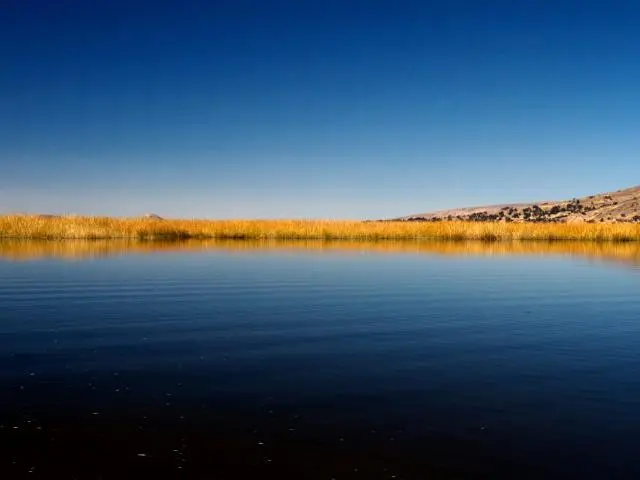


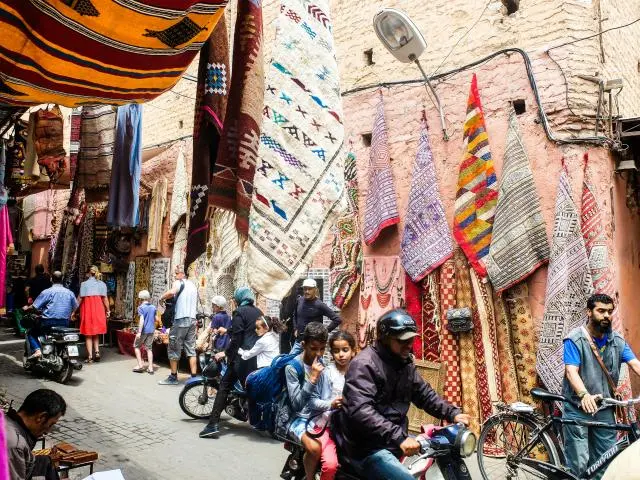
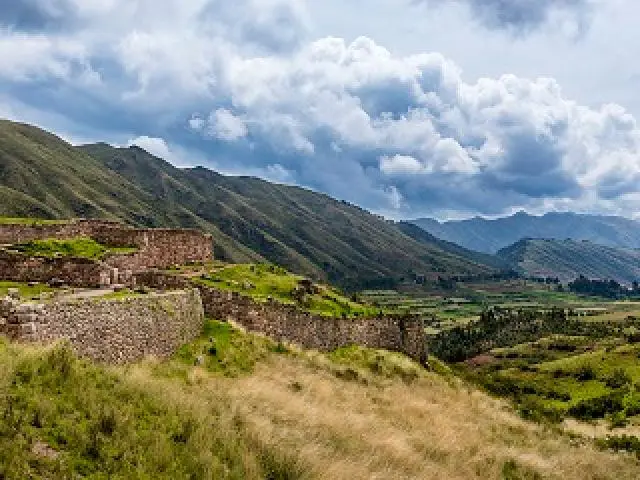
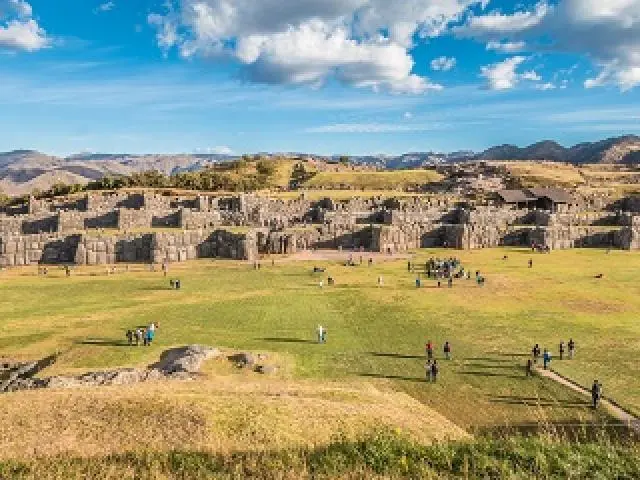

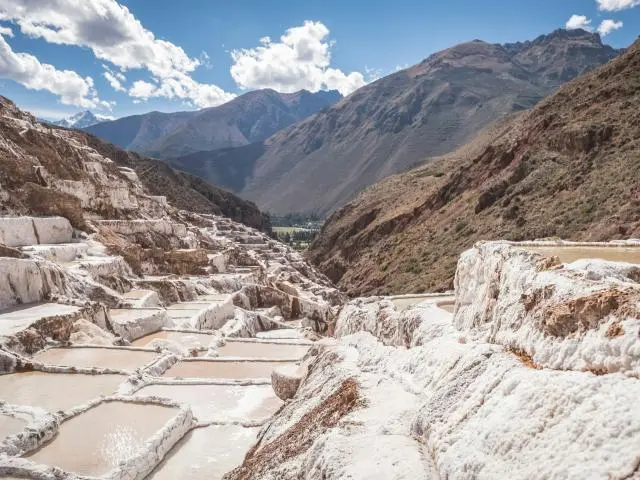
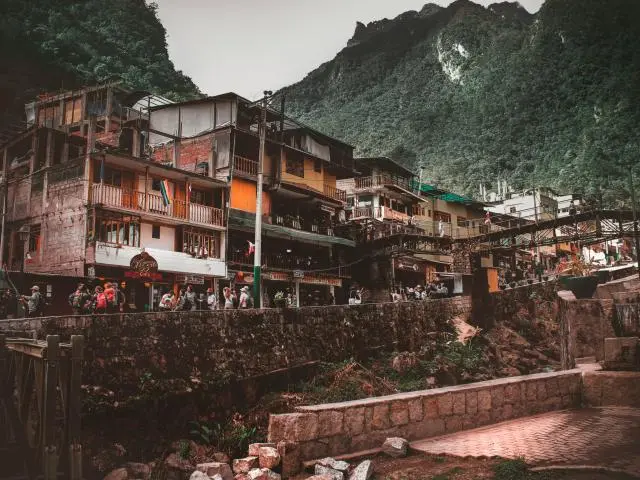



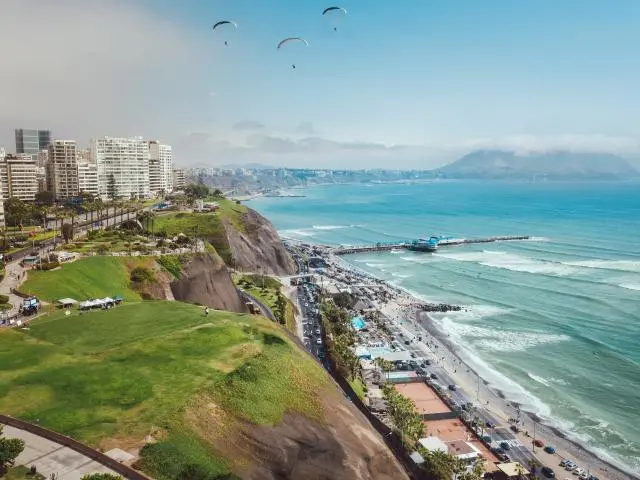
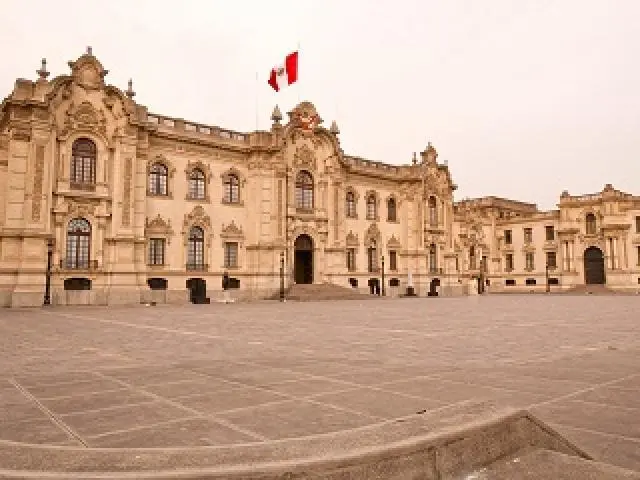
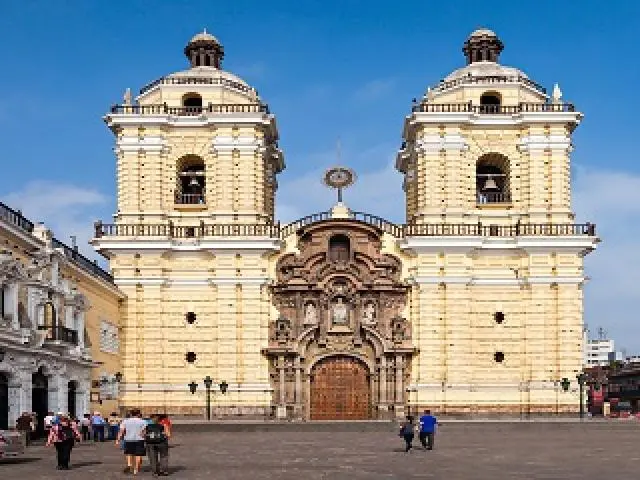
 15-Day Bolivia, Titicaca Lake, Uyuni Salt Lake, Cuzco and Mach...
15-Day Bolivia, Titicaca Lake, Uyuni Salt Lake, Cuzco and Mach...
 8-Day Lima, Sacred Valley, Machu Picchu, Cusco Classical Peru ...
8-Day Lima, Sacred Valley, Machu Picchu, Cusco Classical Peru ...